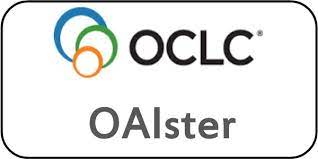Dyslipidemia – A Risk Factor for Osteoporosis in Women: A Cross-Sectional Study
Keywords:
Osteoporosis,, lipid profile,, premenopausal,, postmenopausal,, bone mineral density,, T-scoreAbstract
Background: Osteoporosis has been extensively studied in postmenopausal women but there is a paucity of studies for
detection of osteoporosis in premenopausal women. Recent studies point out that dyslipidemia could be a risk factor
for osteoporosis in postmenopausal women. It is unclear whether dyslipidemia in premenopausal women is a risk
factor for osteoporosis after menopause. This study is an attempt to find whether dyslipidemia in premenopausal and
postmenopausal women is associated with decreased bone mineral density (BMD). Methods: The study was conducted
from November 2013 to March 2014 at Lady Hardinge Medical College, New Delhi. Sixty patients (30 premenopausal
and 30 postmenopausal) who were not having any comorbidity and not on any drug affecting lipid or bone metabolism
were evaluated for lipid profile and BMD. Result: In premenopausal women, there was a negative correlation between very
low-density lipoprotein cholesterol (VLDL-C), triglycerides (TGs), and BMD (lumbar vertebra) while a positive correlation
was observed between high-density lipoprotein cholesterol (HDL-C) and BMD, which was statistically significant (VLDLBMD r −0.363, p = 0.049; TRI-BMD r −0.363, p = 0.049; HDL-BMD r 0.359, p = 0.05). Similarly, in postmenopausal women,
the negative correlation between VLDL, TG, and BMD was statistically significant (TG-BMD r −0.377, p = 0.04; LDL-BMD
r 0.415, p = 0.02), as was the positive correlation between HDL and T-score (HDL-BMD r 0.366, p = 0.04). Conclusion: There
is statistically significant correlation between BMD and serum lipid levels in both premenopausal and postmenopausal
women. Lipid profile variables show a significant association with BMD and can be used as risk factors for osteoporosis.
Downloads
Published
Issue
Section
License
All open access articles published in IJCP are distributed under the terms of the CC BY-NC 4.0 license (Creative Commons Attribution-Non-Commercial 4.0 International Public License). This license permits unrestricted use, distribution, and reproduction of the articles in any medium for non-commercial purposes, provided that: The original authorship is properly and fully attributed. The IJCP is cited as the original place of publication with correct citation details. If an original work is reproduced or disseminated in part or as a derivative work, this must be clearly indicated. No articles are reproduced for commercial use without prior consent from the IJCP. All licensing requests and permissions for commercial use will be managed by the Publisher.










